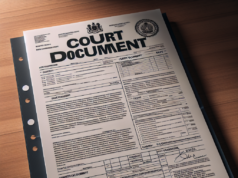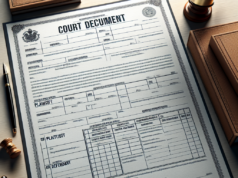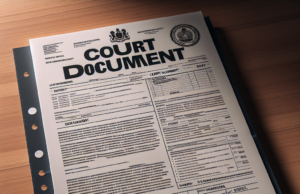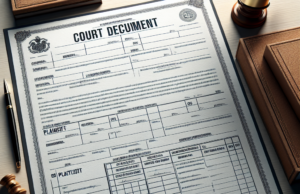
A Quick Guide to Bankruptcy and Divorce
The amount of bankruptcies declared within the United States has significantly risen since the end of the 1980s, and since 2008, the number of bankruptcies has dramatically risen because of the housing collapse. More often than ever, bankruptcy and divorce are running into each other, and there are several very important factors for a spouse to consider about bankruptcy while even thinking about a divorce. Some of the following information listed below will help you with bankruptcy and divorce.
The Automatic Stay Option
The automatic stay option within a bankruptcy allows a spouse to avoid the collection of debt—at least for a short amount of time. However, there are exceptions to the automatic stay option within a divorce. These details are specified within U.S.C. Section 362(b)(2), and the main issues involve spousal support and child support.
Bankruptcy, Divorce, and Support
If a spouse files for Chapter 7 while involved in a divorce process, the post-petition earnings is not considered part of the estate and spousal support and child support can still be collected. However, if the bankruptcy is Chapter 13, the post-petition earnings are not considered part of the estate and payments for support are not available unless a court puts the order into effect. Yet, a spouse can still expect support after a Chapter 13 case is finished. The code 11 U.S.C. Section 523(a)(5) states that a spouse is still liable for support payment after the bankruptcy case is finished.
Bankruptcy, Divorce, and Property Settlement
11 U.S.C Section 523(a)(15) governs conditions for bankruptcy and divorce and property division. There are only certain cases where property can qualify as dischargeable within the divorce hearing and bankruptcy action. In order to have debts discharged, the debtor must be able to prove that he or she cannot take care of themselves, their dependents, and/or their business without discharging the debt. Additionally, some property may be dischargeable if a spouse can determine that the action would outweigh the harm of not being able to give pay child or spousal support.
Although some debts can be discharged such as certain amounts of property, other debts can’t be discharged no matter the conditions of the bankruptcy and divorce. These debts include all alimony and child support, student loans, and debts from fines associated with criminal activity.
How Can I Keep my Property if I’m in need of Support?
As you can see, bankruptcy and divorce are complicated on their own account, but when the two conditions occur at the same time, the process becomes even more complicated. The only true way to keep property while receiving spousal support or child support is to prove to the court that the property is being used for support only and not just property settlement.
You should talk with a lawyer for receiving property in the midst of receiving spousal or child support as well. A lawyer will know how to word the argument, but the loophole doesn’t always work. If a creditor knows that some of the property is for settlement purposes only, no strategy will likely help you in keeping the property.
What Is Abandonment Divorce?
It’s important to understand the distinction between what is ‘lawful separation’ and the grounds for divorce that constitute something commonly referred to as abandonment divorce.
The Basis for a ‘Legal Separation’
First off, in many cases regarding divorce, separation is common. Many times a husband or wife may simply move out of the home freely even before divorce has been finalized, but it doesn’t constitute an ‘abandonment divorce’ for obvious reasons:
1. Both Parties Agree to It
This almost goes without saying, really. It technically doesn’t apply to an abandonment divorce if both parties consent to it. Whether or not that can be proved? That’s an entirely different story. Although in most cases it doesn’t really matter whether or not it’s a ‘legal separation’ or ‘abandonment divorce’ as it results in the same outcome.
2. Sexual Relations Continue
This is an especially detailed piece of legal information but also a huge different between an abandonment divorce and a legal separation. If it’s shown that both spouses are living separately but still maintaining a sexual relationship with each other, there can be no abandonment divorce ordered. True abandonment – more often known as ‘desertion’ – is when one party in a marriage completely cuts off the other physically, mentally, emotionally, and sexually without the other’s consent.
3. The Abandonment Is Unintentional
This applies toward military families or in cases where kidnapping is involved, in that there are times when soldiers are stationed that they become missing in action, or spouses are kidnapped and go missing. In that case, an abandonment divorce can’t be ordered on the fact that the spouse did not intend to abandon his or her spouse. This, however, can lead to the very last stipulation when dealing with abandonment in divorce….
4. The Vanishing Spouse Returns Within a Period of Time as Allowed by Law to Maintain the Marriage
For some states, when one party in a marriage disappears unintentionally, if that party to the marriage then returns, that party must return within a period of seven years, or else the other party can deem the missing party presumed dead. In addition, reasonable attempts to find the missing party to the marriage would be required as evidence to the court to establish a ruling stating a presumption of death on the missing party. However, if the missing party returns even after the seven years, the marriage then continues by law. There are, however, some states that may even terminate the marriage completely after a certain period of time where one party is completely missing, even if the party returns eventually.
Basic Mandates for Abandonment in Divorce
Some states require that abandonment continue for a certain period of time – anywhere between one year to five years – before a court can order a ruling on abandonment.
Moreover, the proof of separation must be completely uninterrupted and continuous. This simply means that a spouse can be charged with abandonment if never contacting the other spouse in any way for that period of time as stated by law.



























